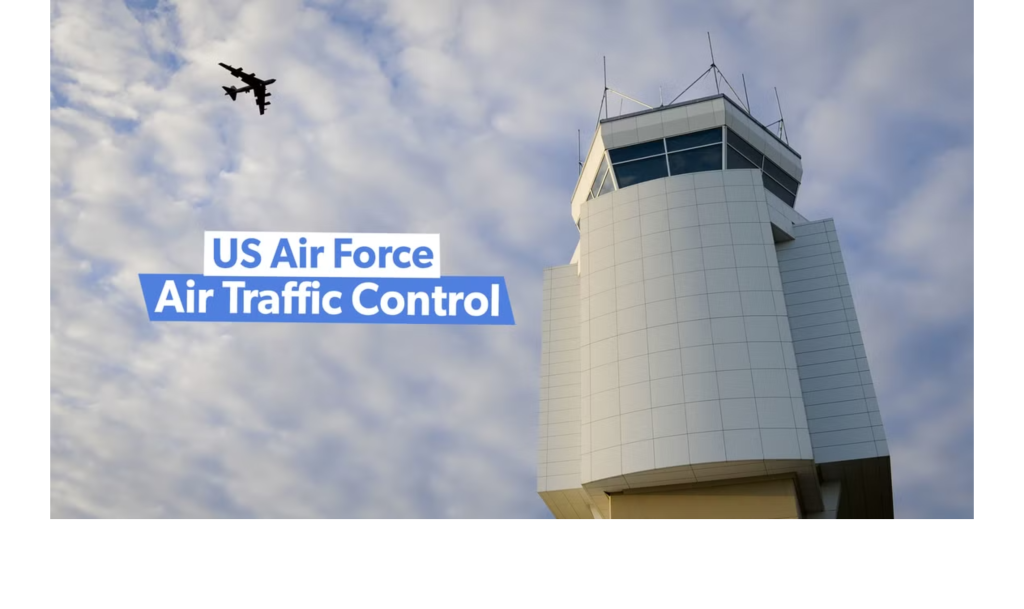
The military provides airport traffic control at airports not served by an FAA or contract civil tower. This can be delegated to contractors, or it can be handled by the United States Air Force or other service branch. Air force bases can get very busy handling a broad range of aircraft, from massive C-5M Super Galaxies to fighter jets to secretive, stealthy reconnaissance drones (although it is hard to say which is the busiest US Air Force base ). In times of combat operations, air traffic control may have to deal with an extremely challenging environment with a high sortie rate, many damaged aircraft making emergency landings, and even the base coming under attack.
The Air Force’s need for ATC
The first controlled, sustained, powered, heavier-than-air flight took place in 1902, and in 1920 Croydon Airport near London became the first in the world to have air traffic control (however rudimentary). Air traffic control (ATC) is a service provided by ground-based air traffic controllers who work to direct aircraft through a given area of controlled airspace. The main purpose of ATC is to avoid collisions, provide information and other support for pilots, and organize the flow of air traffic.

Photo: USAF
Providing ATC services to military aircraft is as important as for civilian aircraft. ATC also commonly provides services for all aircraft operating in its controlled airspace (regardless of whether it is private, commercial, or military aircraft). While air traffic controllers issue instructions to aircraft, the pilot in command of the aircraft always has the final authority to ensure the aircraft’s safe operation.
Select large and busy US Air Bases:
- Travis Air Base
- Sheppard Air Force Base
- Columbus Air Force Base
- Dover Air Force Base
- Ramstein Air Force Base (Germany)
- Luke Air Force Base
- Eglin Air Force Base
- Davis–Monthan Air Force Base
The largest commercial airlines in the world by number of aircraft are American Airlines (with 992 aircraft), Delta Air Lines (with 986 aircraft), American Airlines (with 977 aircraft), and Southwest Airlines (with 803 aircraft).
While not a straight comparison, the US Air Force operates a total of around 4,000 aircraft (or around 5,000 aircraft if training and UAV aircraft are included). This is in addition to the 3,300 aircraft operated by the US Navy and US Marines and around 4,000 helicopters operated by the US Army. Fighter jets fly around 200 hours every year, while commercial jets typically fly around 600 to 800 hours a year. All this is to say, the US military has many aircraft, and its air force bases can be very busy. The need for ATC is apparent.
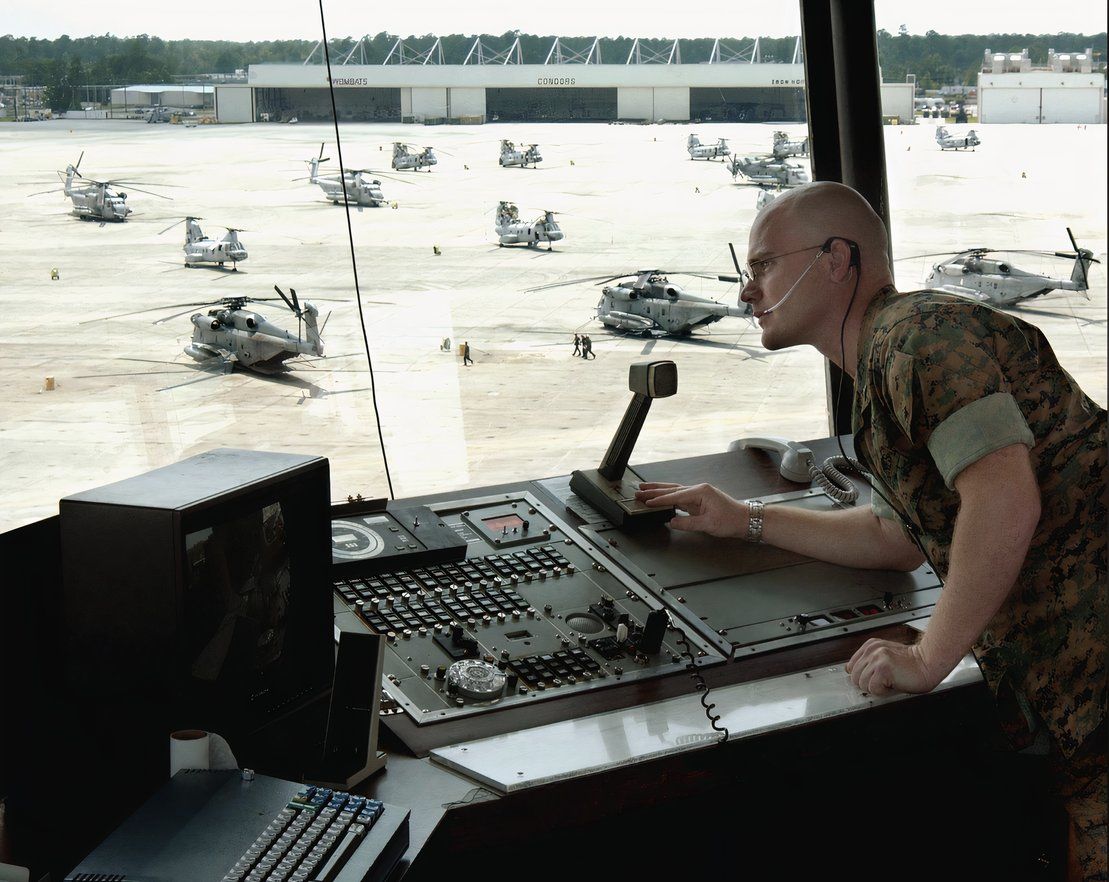
Photo: USMC | LCPL Zachary R. Frank (USMC)
Similar to civilian air traffic controllers, military controllers use radar, communication systems, and weather data to provide instructions and updates to pilots. At times, they may need to coordinate with other ATC facilities and respond to emergencies when they arise.
| Aircraft of the US military by service branch: | |
|---|---|
| United States Air Force: | Approx. 4,000 (or 5,000 including trainers and UAVs) |
| United States Army: | 3,900 (mostly helicopters) |
| United States Navy/Marines: | Approx. 3,300 (manned aircraft) |
| United States Coast Guard: | Approx. 210 (fixed and rotary wing aircraft) |
| United States Space Force: | 2 experimental X-37B spaceplanes |
| NASA: | Approx. 60 |
The United States maintains many military bases outside the US, and one of the largest is Ramstein Air Force Base in Germany. In 2023, Ramstein averaged around 20,000 annual operations, with daily operations typically varying between 60 and 100. The base is nicknamed the Global Gateway.

Photo: US Army
“While making judgments about aircraft sequencing and separation in real time, air traffic controllers concentrate on making sure that daily operations proceed smoothly. The role’s requirements may be demanding, but there are some that enjoy the complexity and variety of the work. The days are unique and bring new challenges that call for creative solutions to be implemented.” – US Air Force
Some airspace is for military use only
Militaries can also claim airspace and deny it to civilian air traffic. In the United States, around 80–85% of the airspace can be used by commercial airlines. However, according to the BBC, China is a notable extreme example, with about 80% of the airspace allotted for military use. Civilian airlines can only use less than 30% of China’s airspace, leaving little room for civilian aircraft. The United Kingdom only closes airspace when it is holding military exercises.

Photo: DVIDS
The US military tends to share airspace with civilian aircraft. Sometimes, the air is divided, with the area below 10,000 feet reserved for military aircraft.
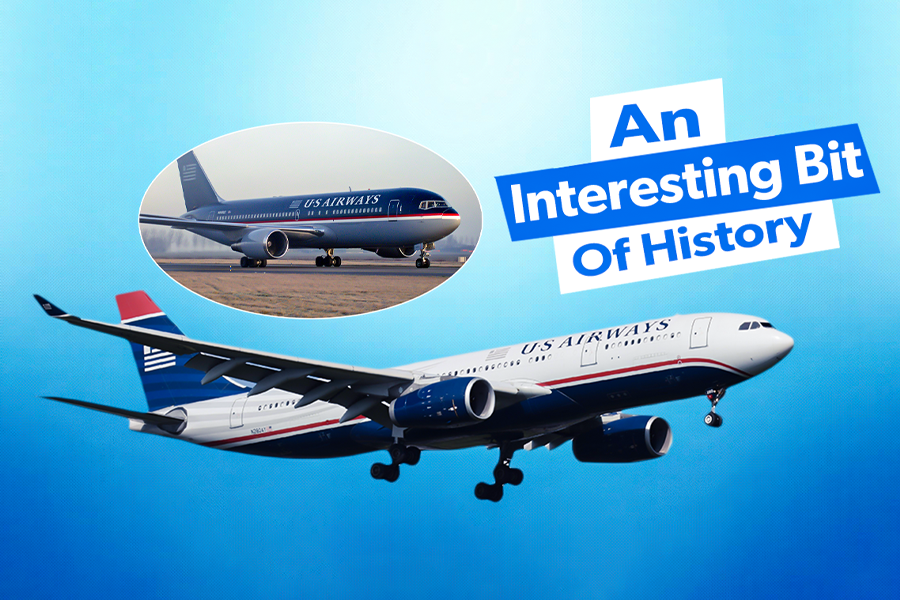
Here’s Why US Airways Was Called Cactus
Most airlines use their names as a call sign, while some have unique nanes.
Military call signs differ from commercial flights
One prerequisite for safe air traffic operations is using distinctive call signs. Scheduled civilian flights are assigned call signs with a two or three-letter combination followed by the flight number (e.g., MH 370). These call signs appear on flight plans and ATC radar labels.
Perhaps the most famous call sign is “Air Force One.” Strictly speaking, any United States Air Force aircraft carrying the President is given the callsign “Air Force One” (although it is typically applied to the modified Boeing 747-400s designated VC-25A, as those are the aircraft the President typically flies on). The same is true of any other service carrying the president (e.g., a Marine helicopter carrying the President is “Marine One” and an Army aircraft carrying the President is “Army One”).
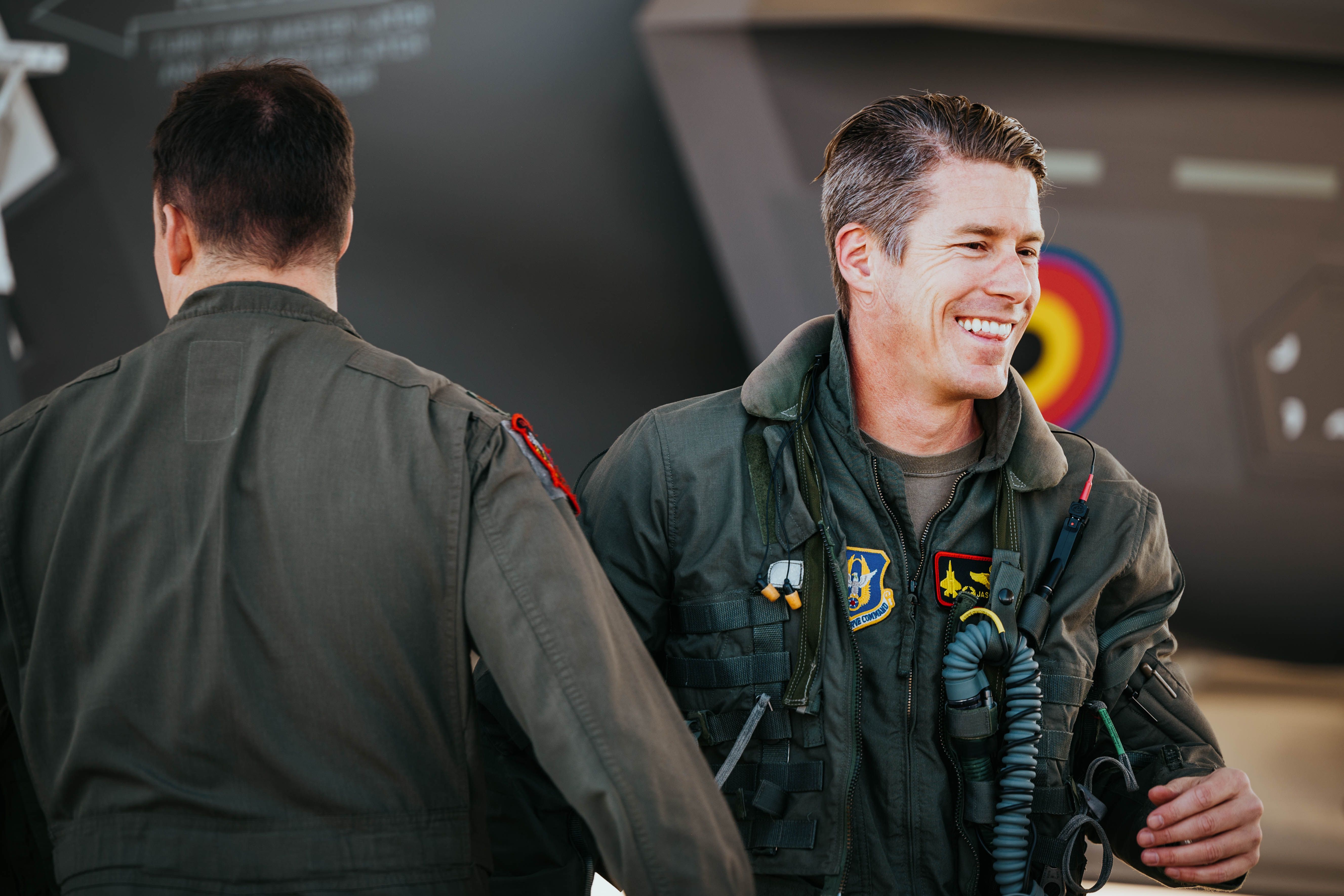
Photo: US Air Force
Aviator call signs are given to fighter jet pilots , and these are often used as a substitute for the aviator’s given name. The call sign is often displayed on the flight suit, flight jacket, and even the aircraft itself. These are also used by NASA astronauts from military aviator backgrounds. Many people will be familiar with fighter jet call signs from movies like the 1986 film Top Gun. In that movie, the character Tom Cruise plays is Pete Mitchell, but he is normally referred to by his call sign, “Maverick.” Other memorable call signs in the movie include “Iceman” and “Goose.”

Here’s Why US Aviation Has Been Experiencing Air Traffic Controller Shortages
The industry is experiencing disruptions as shortages prevail.
Air Force Air Traffic Control is something anyone can do
The majority of jobs to be done in the military are non-combat. Only a very small percentage of the Air Force actually flies airplanes. Instead, most people perform a diverse range of jobs from maintenance to air traffic control.
Tech. Sgt. Randy Mullis of the US Air Force 86th Operations Support Squadron Air Traffic Control Tower is an assistant chief controller and stated, “I was very lucky to be able to join and receive Air Traffic Control as a job. When I first joined I didn’t know what Air Traffic Control was, but I can not see myself doing any other career; this experience has been very fortunate.”
“Anybody who wants to be an aircraft controller can be an air traffic controller. It will take a lot of determination and movitaition, but anyone who wants to do this job can do this job.” – Sra Anthony Hernandez, Air Traffic Control Specialist
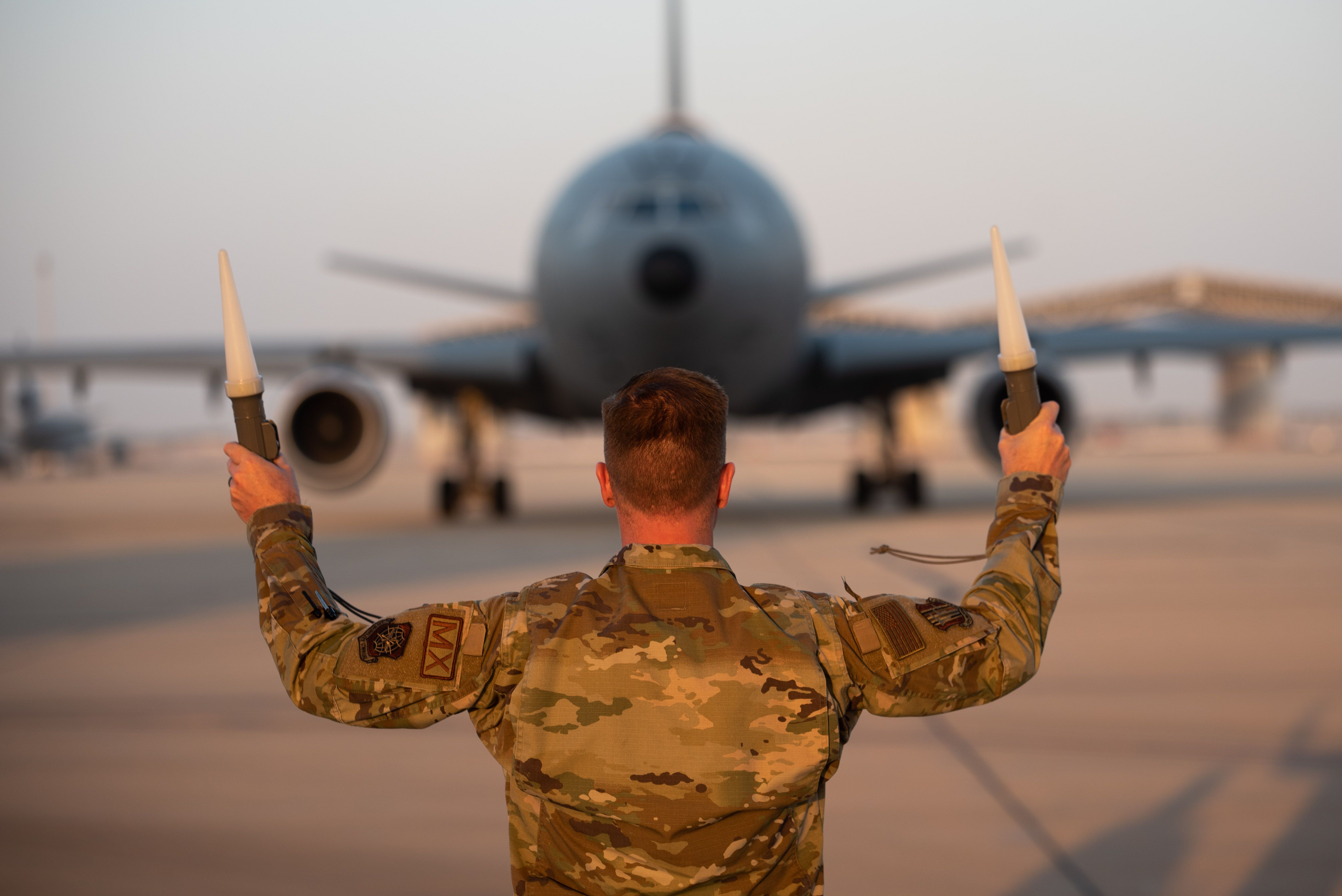
Photo: US Air Force
As one US Air Force controller noted, “Air Traffic Controllers are inherently tied to the very core of the Air Force.” The Air Force says air traffic controllers “never have a dull moment and enjoy solving issues and the exhilaration that comes with controlling a busy airspace.” Drawbacks to the job include irregular hours and shift work, (which can interfere with sleep patterns and personal lives). In the civilian sector, there is a shortage of air traffic controllers , which is having some impact on aircraft operations in the country, prompting the FAA to take some steps to help ease the situation.
The Air Force says, “While many civilian job opportunities exist with higher pay and better schedules, the Air Force provides air traffic controllers with unique opportunities such as worldwide travel, health care benefits, global assignments, and direct assistance for essential operations which can be highly rewarding for those who want challenges and mission-driven work.“
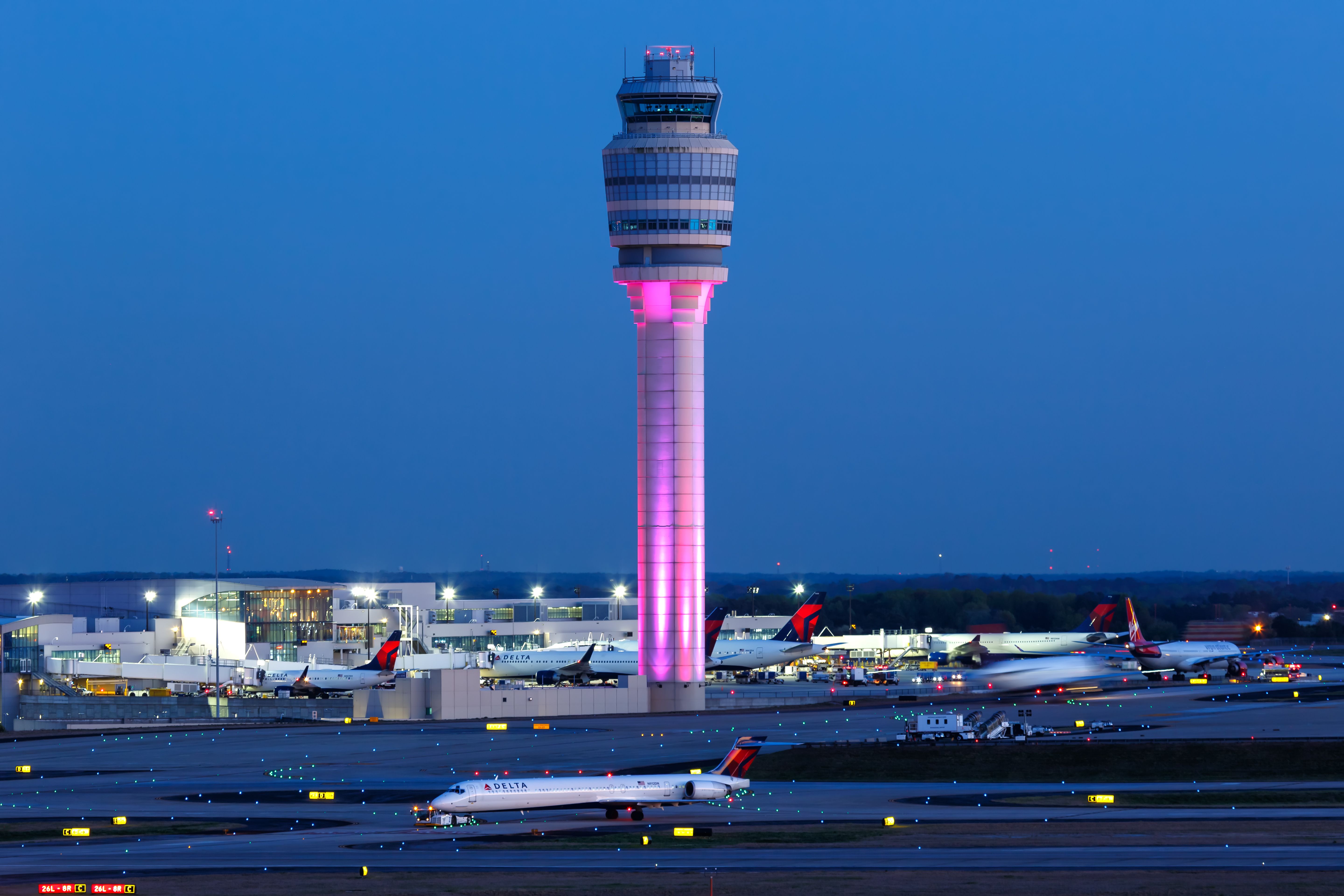
How Air Traffic Control Works To Keep Aircraft Flying Safely
ATC is a complex process with thousands of moving pieces.
The US Air Force contracts out many operations
On 19 December 2024, Amentum reported it had been awarded a $279 million contract by the Air Force to provide aviation operations across the Ninth Air Force (Air Forces Central). Amentum calls itself a leading provider of global engineering and innovative technology solutions and is one of the largest US military contractors that doesn’t supply equipment.

Photo: LACW Annika Smit | Royal Australian Air Force
Joe Kelly, the senior vice president of the Sustainment and Analytics Business Line at Amentum, stated, “This program leverages Amentum’s ability to integrate our advanced technologies into maintenance and operations systems to modernize and enhance key solutions for the Air Force. With this contract, we continue to demonstrate our expertise to deliver advanced mission readiness globally, ensuring our forces have the reliable support they require.”
Amentum is to deliver solutions for airfield management, air traffic control, and critical maintenance services. It is to provide services at US militiary installations in the Middle East (including Bahrain, Iraq, Jordan, Kuwait, Saudi Arabia, Qatar, and the UAE). At home in the United States, Amentum is to provide services at South Carolina’s Shaw Air Force Base and Virginia’s Joint Base Langley-Eustis.
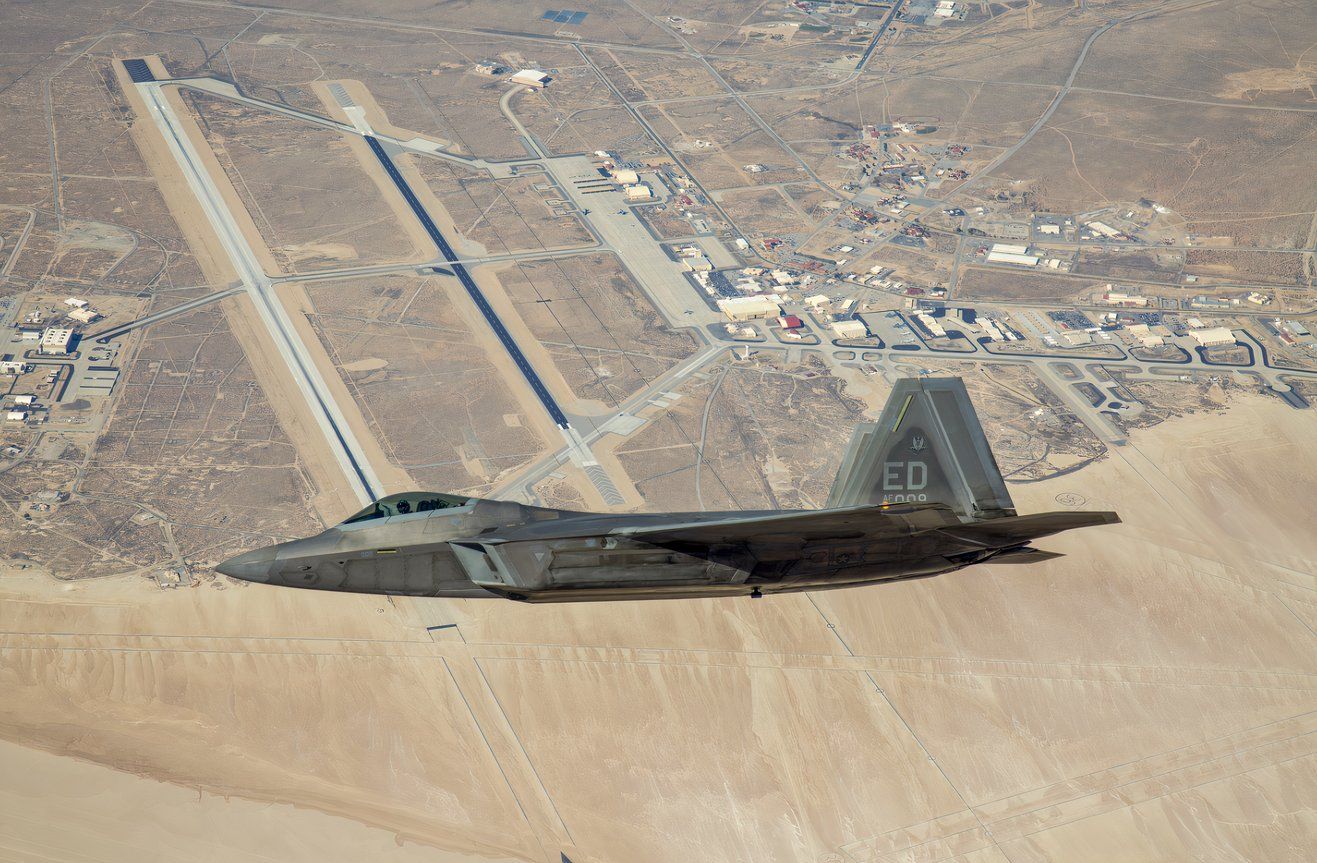
Photo: USAF
Aerial view of Edwards Air Force Base
The company is headquarted in Chantilly, Virginia, and employs over 53,000 employees in around 80 countries around the world. Some of its notable projects include the training of all US Army helicopter pilots at Fort Rucker (for the US Army Aviation Center of Excellence), the elimination of chemical and biological weapons, and operations concerned with nuclear remediation at the Savannah River Site. Amentum is also tasked with operating the Waste Isolation Pilot Plant, the Nevada Test and Training Range, and the Kennedy Space Center.
